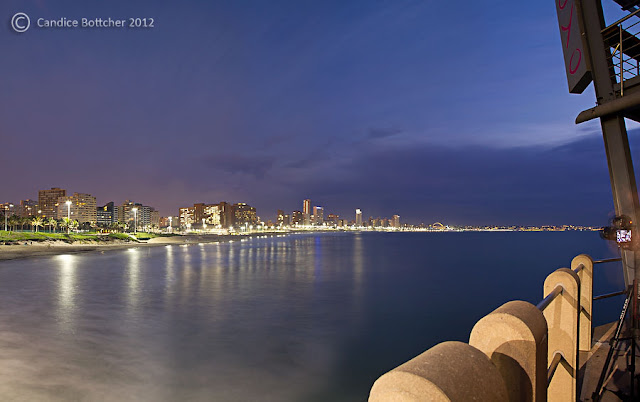We recently finished up a workshop on panoramic landscapes near Durban's uShaka Marine World. Apart from the usual hassles from security that we needed a permit to take photos (I shouldn't get myself started on this, but uShaka and Moyo's little authoritarian control of the public pier is beyond ridiculous, as a passing lawyer pointed put to the poor security guard - who was only doing what his employers insisted he do). After patiently explaining that this was a workshop and not a professional shoot he moved on the litany of statutes that the lawyer spewed out at him might have had something to do with it as well :-) ). So back to the workshop. The images were fantastic! All the students managed to produce something that they were proud of, some of which are shown here. Most of all though everybody there just had fun. Some thoughts on creating panoramics:
Click through to read the rest of the article
Creating panoramics is deceptively easy actually. Yes, you can go ahead and buy a Gigapan, Ninja Nodal, Manfrotto panoramic head, Panosaurus or any number of other devices that are meant to create seamless panoramic shots, but the reality is that careful technique, an understanding of the limitations of a standard tripod head and some decent software - in this case Photoshoip CS5 or Elements - is all that is needed to create good panoramic images. In this regard a number of panoramic shooting colleagues are often surprised when they look at my panoramics and discover that I haven't actually used any of the special panoramic heads that are sold (my many thanks to Sean Tilden for opening my eyes to this).
So, let's say you have decided to give the panoramic a try. Step one, sort out what the exposure ought to be by looking at the histogram and working out the optimum exposure in manual mode. Manual mode is important as we need to create an exposure that is the same for the entire length of the panoramic. One of the tricks here is to loosen the panning control of the tripod and see whether the exposure works for both the left and right sides of the shot. You can use this same technique to work out the actual composition - just swing the the loose tripod head from left to right and try to visualise it as a single image. Once you have this sorted out all you need to do is create a series of exposures that overlap by about a third of the image on either side. Another point is that if you are going to use a graduated filter in the shot, make absolutely sure that the filter is dead level with the horizon as any tilt results in a near impossible match up of tones in the sky and clouds. Also a tripod in these situations is essential as again the filter needs to match up exactly. Surprisingly, if the light is good and you are not using filters, then it's more than possible to create a hand-held panoramic (this is one of my favourite techniques for shooting events - see post on COP 17)

I've also found that shooting a vertical seems to work more effectively than a horizontal, especially if you aren't using a specialized panoramic head. The panoramic heads are designed to keep the optical centre of the lens as the pivot point for the camera. The problem with a just sitting the camera on a tripod and rotating the field of view is that the optical centre of the lens then sits ahead of the rotation point. When shooting vertically this gets worse by moving the rotation point forward and to the left or right of the rotation point. This makes stitching difficult and in some instances impossible as the foreground simply cannot line up. All the same, the vertical orientation seems to give more information to Photoshop with which to stitch the image, and there's plenty of excess so that I have more crop options. I've managed great results without a panoramic head, so long as I bear certain limitations in mind, and so long as I'm prepared to occasionally do some manual stitching, or alternatively do an auto-stitch and then add fix elements in the frame by overlaying an individual image in Photoshop and masking out all but the corrected piece.

All the usual principle in composition hold, except you can also experiment with compositions that lead the eye across the frame and out. Panoramics are wonderful images for scanning horizontally with the eye. Experiment and enjoy the results, they really don't need a masters degree to achieve.


No comments:
Post a Comment